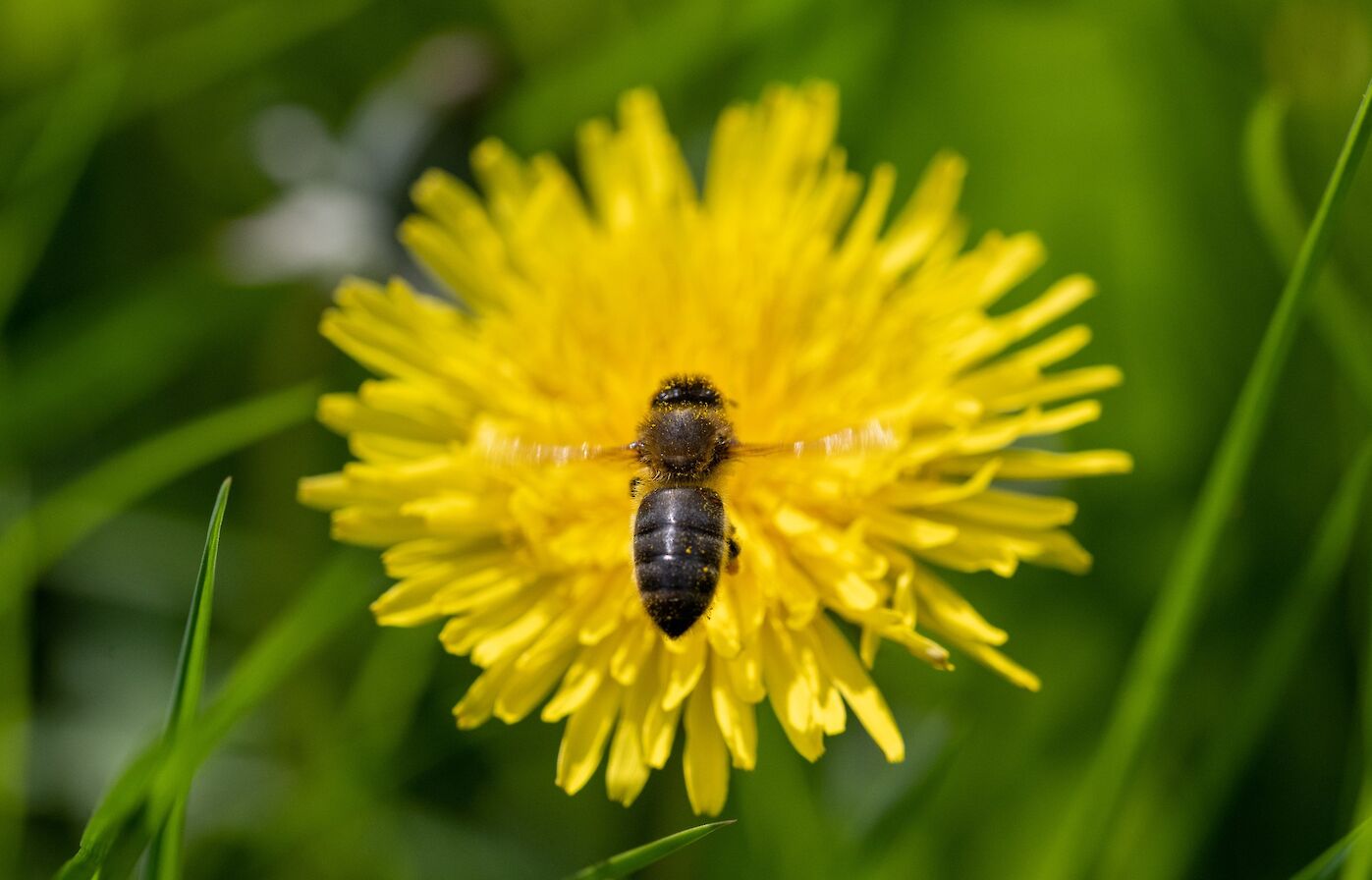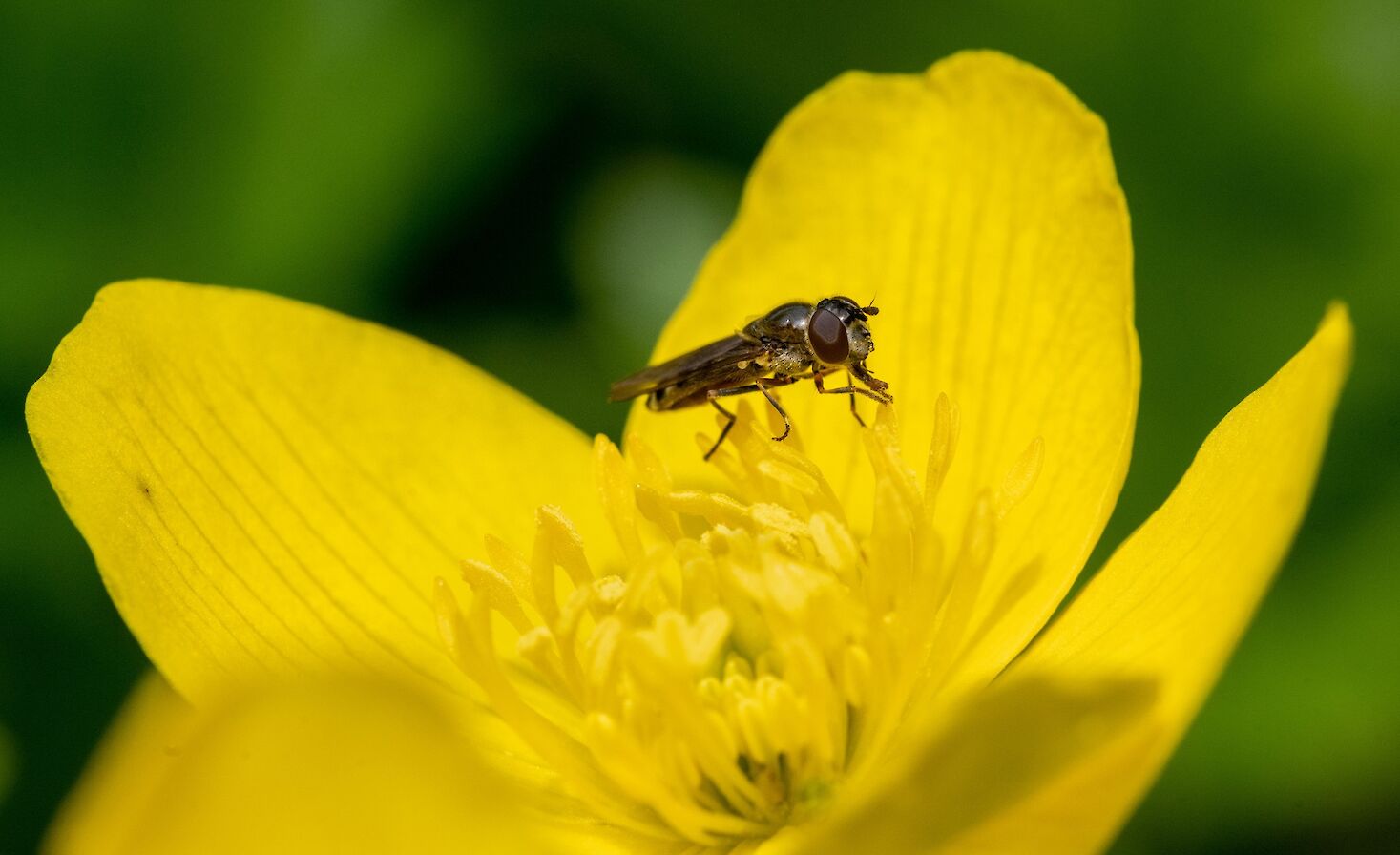My monthly article does of course cover local wildlife but this month I’m going very local indeed, into my back garden!
I’m fortunate that despite living in the heart of Kirkwall I have a garden that stretches some 30 metres long and 12 metres wide, but unlike my old garden in Aberdeenshire, I don’t feel like it’s particularly good for wildlife. I’d really like to change that.
I sometimes get hedgehogs in my Kirkwall garden but down south I would regularly see roe deer, red squirrel, red foxes, badgers and pipistrelle bats. To compare the two is perhaps a little unfair as of course Orkney doesn’t have these species, besides the pipistrelle. Birds too are a little thin on the ground in my Kirkwall garden and I miss seeing the bullfinches (is there a smarter looking bird?!) and long-tailed tits that frequented the hawthorn tree of my Aberdeenshire garden.
During the storms of last winter, the two large trees in the garden succumbed to the constant strong northwest winds. Both were rowans and I always had a sneaking suspicion that despite being fairly mature they didn’t look particularly well - leaf and berry growth always looked a bit half-hearted. Sure enough, when they toppled much of the root system was dead. As well as the disappointment of losing the trees themselves this was also the place that I could guarantee seeing goldfinches.
Goldfinches are fairly new to Orkney and seem to be doing well, it was lovely seeing a little bit of colour in the garden flitting from rowan to rowan.
I’ve since replaced them with rowan saplings whilst the birch trees I planted last year have really taken off. But perhaps I’m thinking about this in the wrong way. The birds I see regularly in the garden are starling, house sparrow, blackbird and song thrush, woodpigeon and collared dove, whilst dunnock, greenfinch and goldfinch are occasional visitors. That may read as a slightly underwhelming list but given that the first four species on the list actually nest in the garden, perhaps I should be thinking how good the garden is for birds.
Most of the garden is a lawn but surrounded by mature shrubs and trees which provides plenty of cover for the birds. We think of house sparrows as common birds but nationally they are a species that has undergone a gradual decline over the last 100 years and are now red-listed as a species of high conservation concern.
The most rapid declines have been in urban populations. In London for example, sparrow numbers fell by 60% between 1994 and 2004. The causes are not straightforward. Population decline is thought to be linked to changes in agricultural practices but studies in England showed that urban chick starvation was caused by a lack of invertebrate prey.
The male house sparrows here are noisy with their strong distinctive chirp. I think they’re quite a handsome bird, especially its dark bib. I’m almost certain they are nesting under the roof of a nearby house - a slate isn’t quite as straight as it should be and so a sparrow-sized gap has appeared. I’ve tried to attract them directly into my garden too with the addition of a sparrow nest box but I was too late in putting it up and with house sparrows favouring at least loose colonial nesting, I probably need to put at least two more up for next year. Not that this year’s box has gone to waste, a nest has indeed appeared inside, but a delicate paper one built by a wasp instead.
I’m happy to say that I’ve seen the sparrows coming back and forth with beaks full of the invertebrates their chicks need at this time of year. Invertebrate numbers however have also declined sharply over the last few decades but there is something very simple that you and I can do to help, and the effort involved is absolutely minimal.
Wildlife charity ‘Plantlife’ started a campaign back in 2019, their stated goal is to ‘make lasting positive change for wildflowers, plants and fungi’, and in recognition of the loss of pollinating invertebrates they launched what is now an annual campaign called ‘No Mow May’ in order to ‘liberate your lawn and providing space for nature’. As the name suggests the idea is to not mow your garden for the month of May.
The statistics behind the losses are quite staggering. We’ve lost nearly 97% of flower rich meadows since the 1970s and with them the loss of vital pollinators like bees and butterflies.
I had some work in Shetland during early May filming otters and, with the lawn already starting to grow, the words I left my wife with were ‘please don’t mow the lawn’. A flower that we (as gardeners) are constantly trying to get rid of is the dandelion, in fact we often don’t regard it as a flower but a weed, and with the word weed comes some stigma. But the humble dandelion does in fact have over 200 micro species, 19 of which are to be found in Orkney. They provide a much-needed nectar boost for the earlier bee species and is there a more expertly designed seed dispersal system than a dandelion head?
The back of the garden is a bit boggy and so marsh marigold thrives here. Of all the flowers available in the garden the marsh marigold attracts the most flies and hoverflies. Next to this patch is the chopped up remains of the downed rowans which now acts as a ‘bug hotel’. I can see many small spiders dart in an out from what must be an incredibly complex 3D space inside. They are however tiny and far too fast for my camera. What I’m most surprised at is the diversity of flowers that have appeared on the lawn which has now gone a full month without mowing.
The delicate lilac flowers of lady’s smock have appeared in the damper ground, the daisies have attracted buff tailed bumblebees and there isn’t a red campion flower that doesn’t have the attention of a hoverfly. Also exploring the many pink petals are numerous common snout hoverflies. Speedwells and buttercups are widespread on the lawn as is the common mouse-ear. The last of the dandelions are still attracting some green veined butterflies too, but in the breeze once they alight, they are almost already in next door’s garden!
Mowing is something that is deeply entrenched in the psyche of the gardener but ‘No Mow May’ isn’t actually about zero mowing, it’s about changing how we mow, say perhaps every four weeks rather than every two weeks. I know for instance that the blackbirds and song thrush find foraging in shorter grass easier and so I mow a long section along one side so it’s shorter, the daisies also prefer this. Once I’m finished and inside having a cup of tea its almost instant, both species have come down from the bushes and now have a beak full of worms.
There are over 20 million gardens in the UK which adds up to a lot of land. Imagine the difference we could all make if we just changed our mindset a little and could be happy with being a little less ‘tidy’, leaving at least a small part of our gardens as part of a mosaic rather than unified lawn. The results from doing very little are indisputable. Changing the way we mow can result in a tenfold increase in the amount of nectar available to bees and other pollinators.
Doing a little results in a lot for nature. Perfect, really.
Find out more about Raymond’s work via his official website. You can also find him on Facebook, Twitter and Instagram.







